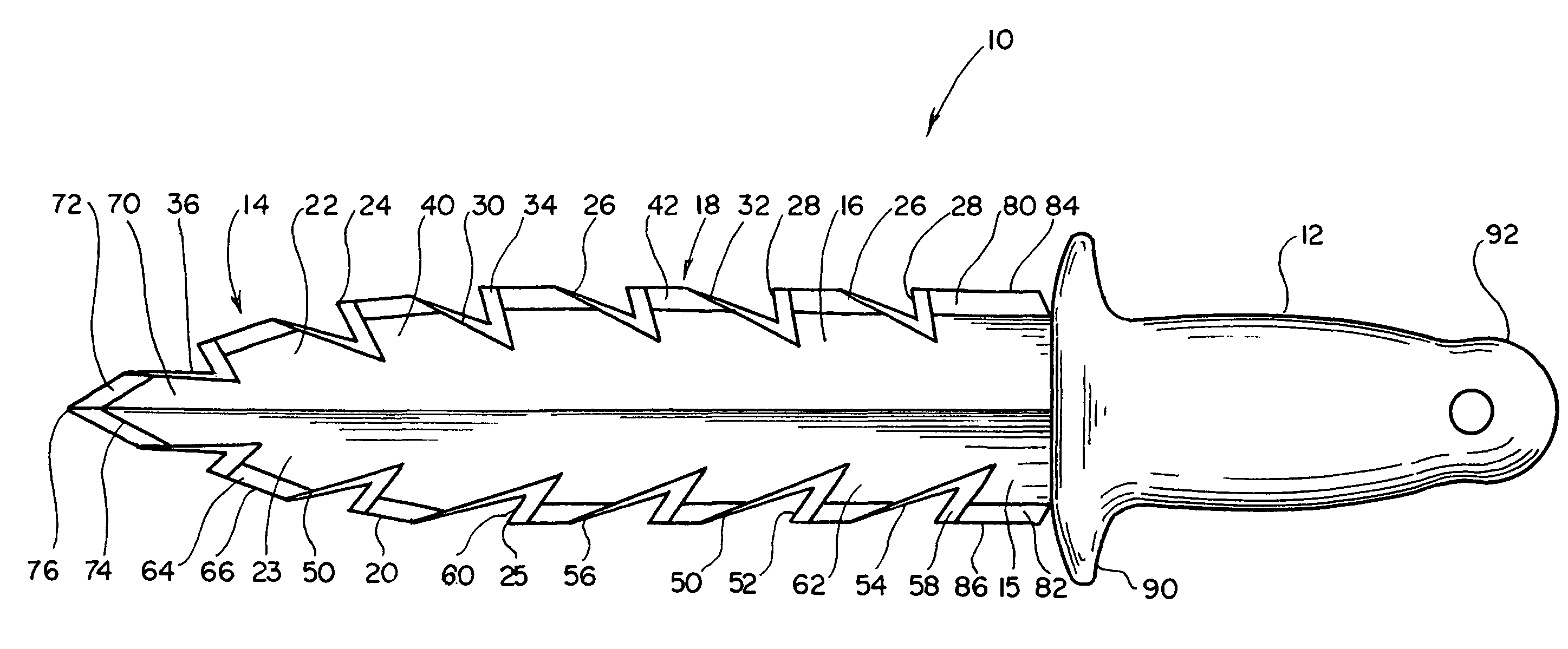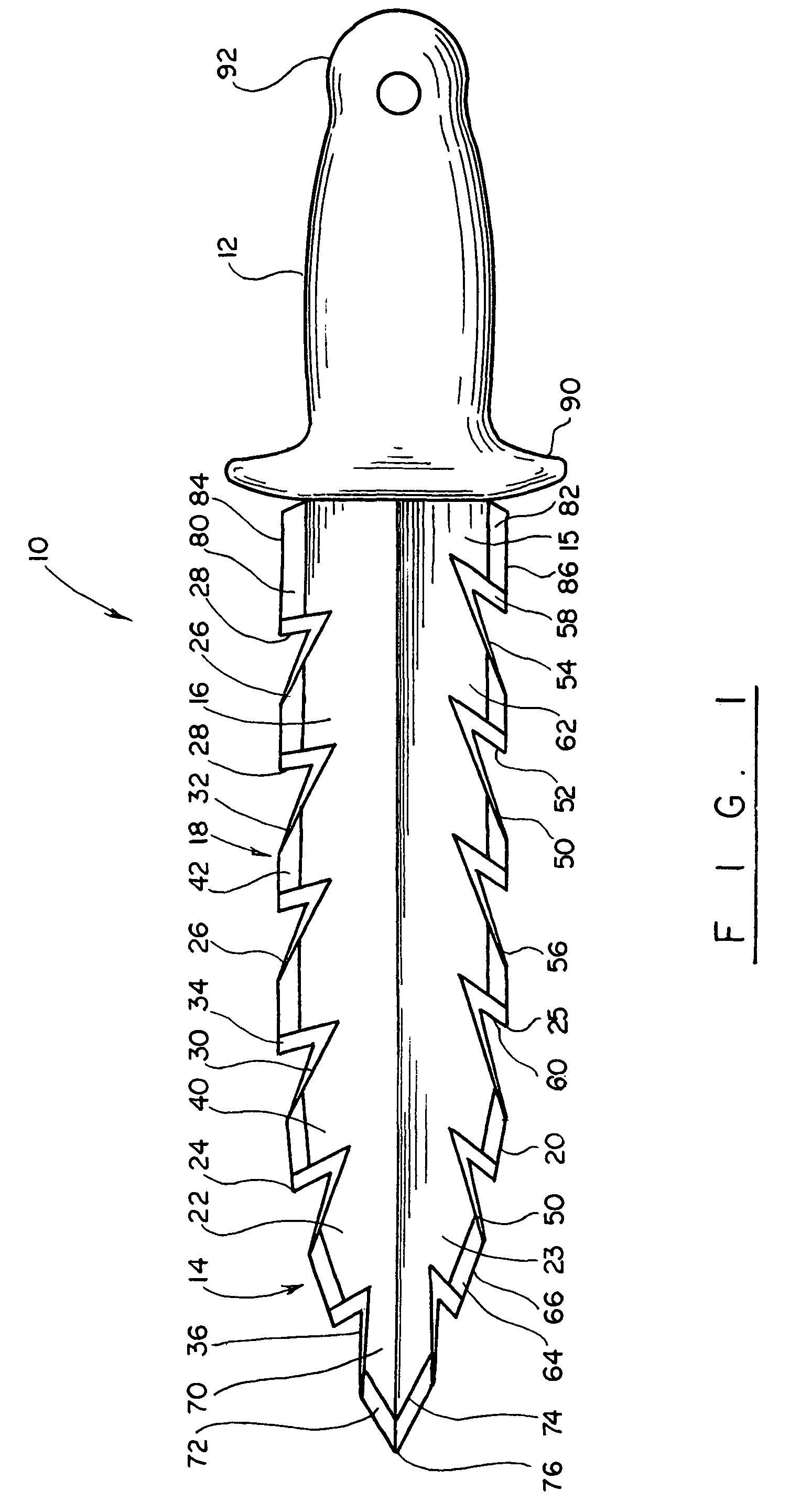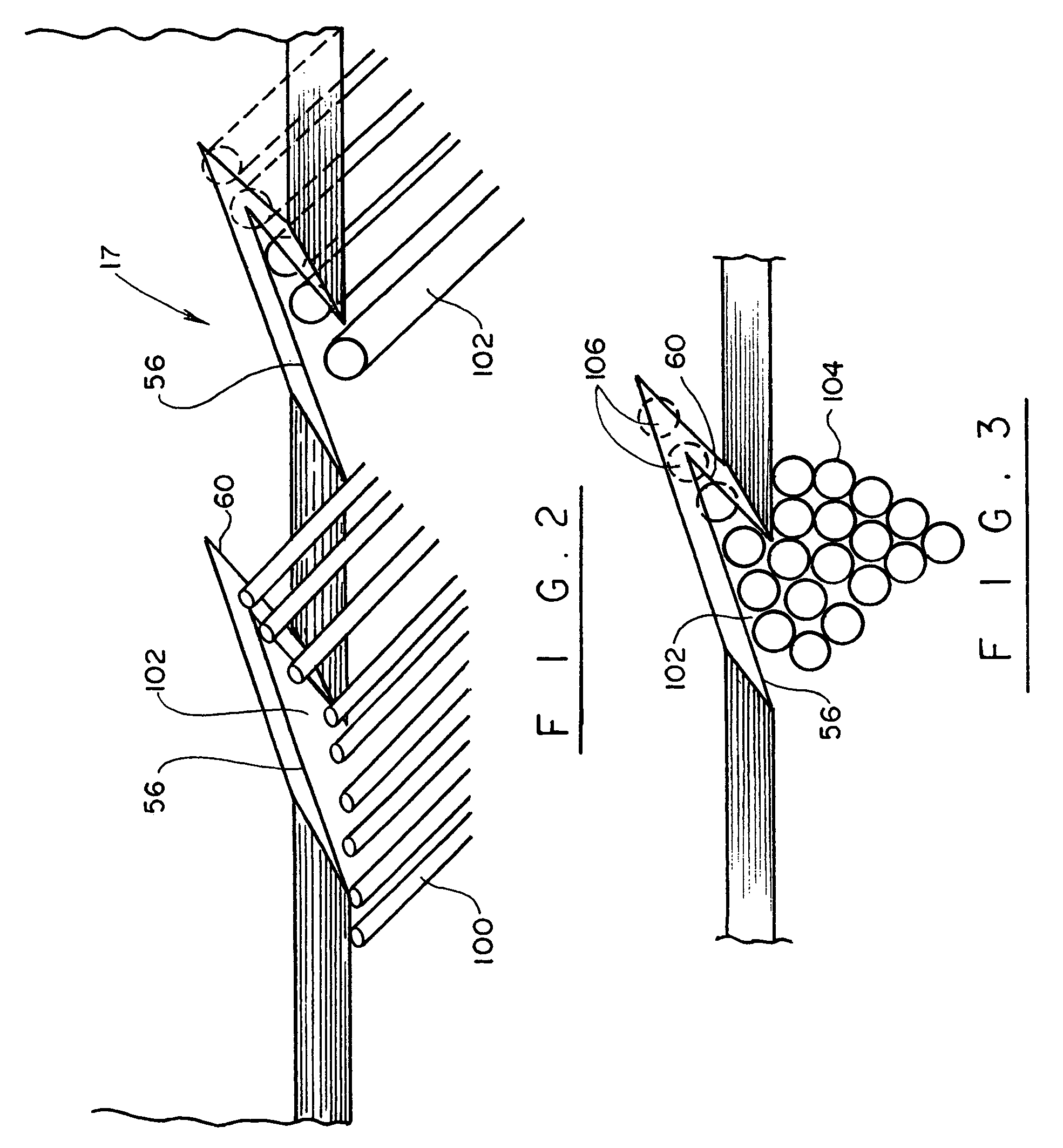Serrated knife
a serrated knife and blade technology, applied in the field of serrated knives, can solve the problems of small boat operators often encountering problems, blades are particularly ineffective, and the serrated cutting device has not proved particularly useful in industrial applications
- Summary
- Abstract
- Description
- Claims
- Application Information
AI Technical Summary
Benefits of technology
Problems solved by technology
Method used
Image
Examples
Embodiment Construction
[0014]Turning now to the drawings in more detail, numeral designates a knife in accordance with the present invention. The knife 10 comprises a handle 12 and a blade 14 secured to the handle 12 at a proximate end 15. The blade 14 comprises a front, 16, a back 17, which is a mirror image of the front 16, a first edge 18 and a second edge 20.
[0015]The first edge 18 and the second edge 20 each comprise a plurality of sharpened teeth 22, 23, respectively, each of the teeth 22 having a distal end 24 extending away from a central longitudinal axis, or centerline X of the blade 14. A line connecting each of the distal ends 24 actually defines the first edge 18. Each of the teeth 23 has a distal end 25, which extends away from the central axis X of the blade 14. A line connecting each of the distal ends 25 defines the second edge 20.
[0016]Each of the teeth 22 comprises a first serration side 26 and a second serration side 28. The first serration side 26 comprises a pair of beveled surfaces ...
PUM
| Property | Measurement | Unit |
|---|---|---|
| angle | aaaaa | aaaaa |
| angle | aaaaa | aaaaa |
| angle | aaaaa | aaaaa |
Abstract
Description
Claims
Application Information
 Login to View More
Login to View More - R&D
- Intellectual Property
- Life Sciences
- Materials
- Tech Scout
- Unparalleled Data Quality
- Higher Quality Content
- 60% Fewer Hallucinations
Browse by: Latest US Patents, China's latest patents, Technical Efficacy Thesaurus, Application Domain, Technology Topic, Popular Technical Reports.
© 2025 PatSnap. All rights reserved.Legal|Privacy policy|Modern Slavery Act Transparency Statement|Sitemap|About US| Contact US: help@patsnap.com



